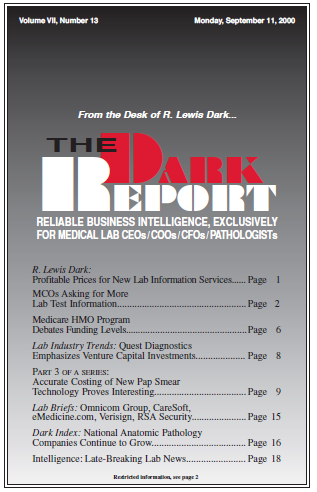CEO SUMMARY: Medicare+Choice was to offer seniors insurance options that went beyond standard Medicare fee-for-service services.Through the 1990s, seniors enrolled in Medicare HMOs at phenomenal rates. A recent GAO report repeated claims that Medicare HMOs are over-funded, to the tune of $5.2 billion per year. Congress must now consider a dozen bills seeking increased reimbursement …
Medicare HMO Program Debates Funding Levels Read More »
To access this post, you must purchase The Dark Report.


